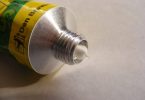Table of Contents
What is clamped betta fins
Clamped fin appears when a betta fish fin is folded against their body, a condition mostly common among aquarium fishes. However, fins that are clamped do not in any way or by any means show a particular disease, the fins that are clamped are rather a sign of poor water quality or something different, just like parasitic organisms. Hence, there is a need for you to discover what the problem is, that way you can provide your fish with the adequate treatment. One such way is: keeping your fish in a clean environment daily, as this practice prevents clamped fins.
It is best to take out time to always carefully observe your fish when feeding or any other time, if you do and you notice any signs, early detection will eventually give you more time to attend to the problem.
Clamped fins in betta fish don’t just appear, there are some causes that may have led to this. We are going to go over these causes and also how to treat them.
What does a betta clamped fin look like
- The fins are folded against the body and do not stick out as they should
- Listless behaviour
-
Ich Diseases and Infections
Fish that have ich develop spots that look like salt all over their body. In addition to clamping, other symptoms include rapid breathing and glancing. Common causes of ich include stress, rapid changes in temperature, and changes in pH. You can treat ich by using antibiotics and drugs.
-
Bullying
Stress is another major cause that can lead to clamped betta fins. And what causes stress? “Bullying” this causes stress in fish.
If your betta shares his tank with aggressive fish, move the betta to a different aquarium. Preferably, choose a tank larger for betta fish and smaller for attackers.
If this is not an option, give your betta new hiding places by introducing plants and decorative items to the tank. This will relieve the betta from bullying. If this was the primary source of the clamping, the problem would automatically resolve once you remove the source of the bullying.
Also check here on how to treat curled fins in betta fish
-
Water Conditions
A clamped fin indicates that there is something bringing the fish some discomfort. Like we have seen, there really is no one disease that leads to clamping, instead the clamped fins are pointers to the fact that something is wrong. Bad water conditions can cause clamping in betta.
Like most fish, bettas require special conditions to thrive in a tank. You must provide and maintain these conditions in order to keep the betta healthy. If your betta’s fins are clamped, test the waters.
Ensure that pH, temperature, hardness, nitrate, nitrite and ammonia levels are within relevant limits. To give your betta some relief, you are also encouraged to do water changes. Start with a 50 percent water change and then follow it up with a 10-25% water change.
How to get started on fixing the issues that surround the quality of water
Let us say that the size of the tank and the temperature of the water are not the issue, how else do you identify the issue? You will need to have a trusted kit for testing your aquarium, so that you are able to know the level of ammonia and that of nitrite at the point zero, as well as know the level of nitrates below 20ppm.
Should you identify any issue, consider carrying out a twenty-five percent change of the water immediately, and repeat the process within two days. The implication of the exercise is that at least forty percent of the water left in the tank will be good as new; quite fresh. In addition to that, introduce an aquarium salt to your aquarium; add about a half teaspoon or even less than that for a better result.
Irrespective of what most manufacturers may print on their packages for medicines used in treating the clamped fins of betta fish, the most effective thing to do is the test method; constantly test your water and change them often. That way you can protect your water from toxins and take precautions.
By all means do away with high temperature and PH fluctuations, also watch out for symptoms of ailments. If there are symptoms of diseases, re-examine the alternatives for treatment available to you.
More so tidy the filter, aquarium, and any equipment or ornaments in the tank. Remember not to rinse under tap water when cleaning the filter media, but squeeze the medium out of the tank into some siphon water. Doing so will keep your bio filter safe and avoid the hassle of recycling the tank. Your fish will return to good health once there is good water condition.
-
Food
You have to make sure that your betta fish is adequately fed. Inspect the water to make sure your betta is actually eating. Some diseases cause bettas to become lethargic, causing them to become so inactive that they stop eating altogether.
If you notice this kind of behavior, use a turkey baster to squirt the food in his face to get some into his mouth. If you start to see large amounts of leftovers in the tank, your betta is probably not eating. This will make its situation worse.
- Velvet is another usual cause of clamped fins. The velvet is dust-like, a little rusty that leaves off a yellow coat on the fin on the fish.
Initially the fish rubs against hard objects trying to remove the parasites, then the diseases progress causing the fish to be lethargic, loss of appetite and weight loss.
Treatment includes;
- Raise the water temperature
- Dim light for several days
- Add aquarium salt
- Turn off carbon filtration during treatment
How to Treat Clamped Fins
A good practice is to melt the salt, the tank water salt. Usually just a teaspoon for each five water gallons because salt hinders the multiplication of parasites and bacteria.
If you do not see any sign of infection, make some efforts to examine the tank and the water as well. More so, the PH level of the water could unusually change, causing clamped fins in your betta. You can also introduce chemicals made for aquariums to the tank, this will restore the PH level of the water and make the water healthy for the fish.
It is also advised to change between twenty-five percent to fifty percent of the clean water in the tank. This is also efficient in getting rid of bacteria and also balancing the PH level of the tank. Some medication recommends waiting for sometime before carrying out the water changing process, this is because when the water is changed immediately, the applied medication will be washed away. But when it is changed after, the medication and other effects are washed away after the medication has reached efficacy.







